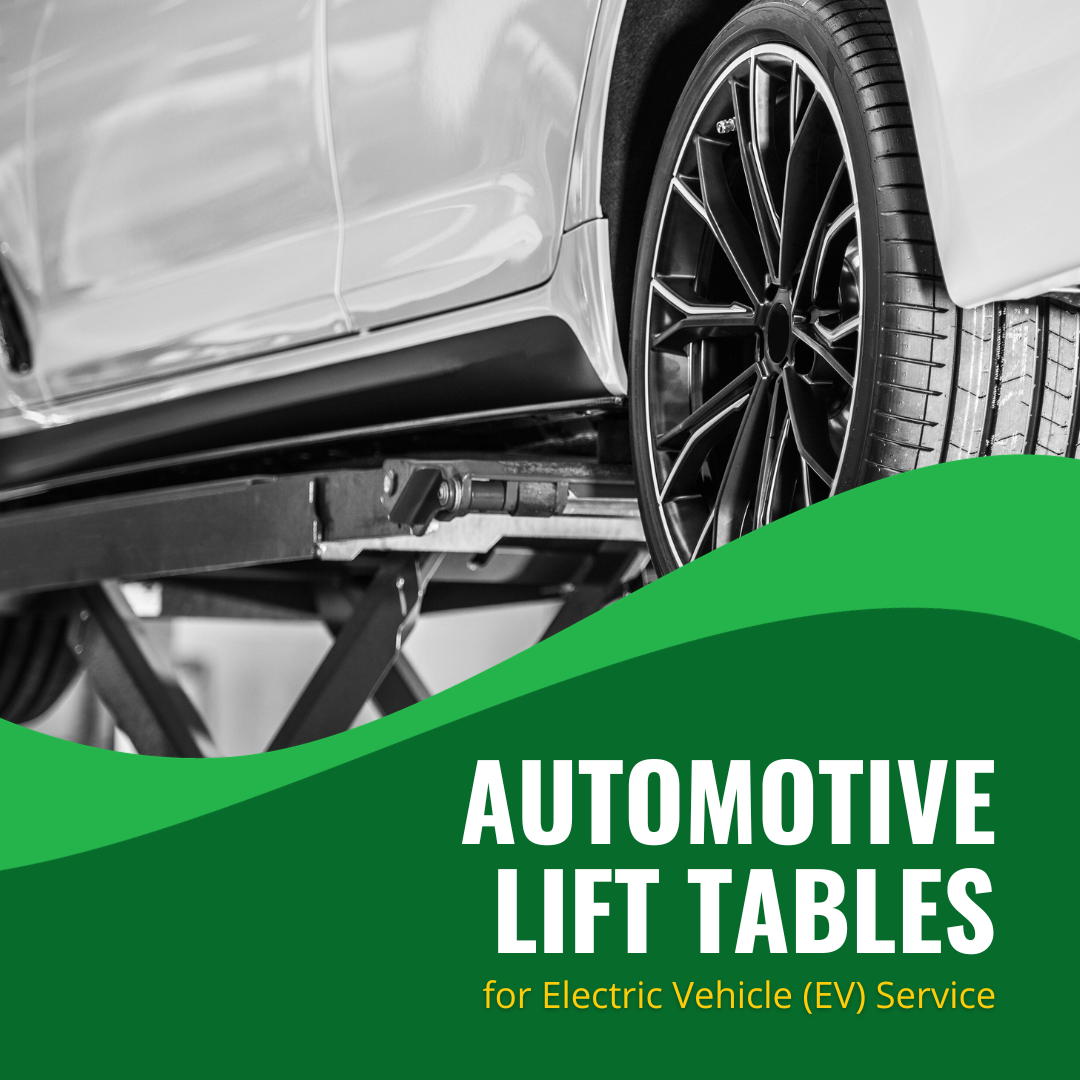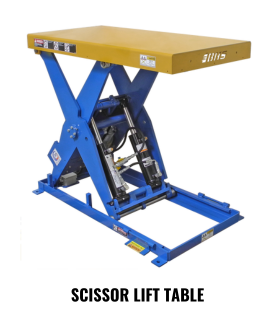We use cookies to make your experience better. To comply with the new e-Privacy directive, we need to ask for your consent to set the cookies. Learn more.
Automotive Lift Tables for Electric Vehicle (EV) Service
Institutions from legacy automakers to the U.S. government are investing heavily in electric vehicles (EVs). Is your auto repair shop ready for the transition? The truth is, it takes more than additional training to service EVs. You’ll also need new material handling equipment.

First off, there’s the vehicle lift itself to consider. Even if an EV has roughly the same wheelbase as the traditional cars or trucks you work on, it’s likely to weigh a lot more. For example:
- A Ford F-150 Lightning EV is one third heavier than the gas model.
- A standard-range Tesla 3 weighs over 600 pounds (272 kilograms) more than a Honda Civic.
- At more than 9,000 pounds (4,082 kilograms), a GMC Hummer EV weighs three times as much as a Civic.
Auto shop owners will need to review existing lift capacity before elevating an EV. Once you have the vehicle elevated, however, you run into another material handling challenge unique to EVs: removing the battery pack.
These battery packs can easily weigh over 1,000 pounds (454 kilograms). They’re usually accessible from beneath the frame of the vehicle, which means you need both a vehicle lift and a battery lift to remove them.
With the quickly changing market, it can be hard to tell what types of lifting equipment are up to the job of handling EV batteries. Check these features to make sure your next automotive lift table will function as an effective EV battery lift.
3 Features to Look for in Automotive Lifts Tables for EV Batteries
Before you choose an automotive lift table, investigate these three elements. They’ll help you determine whether the lift table will do the job of handling EV batteries.
1. Capacity
The average EV battery weighs around 1,000 pounds (454 kilograms), though some can be much heavier. (The Hummer EV battery weighs in at nearly 3,000 pounds [1,361 kilograms].) To handle these battery packs, you need an automotive lift table with heavy-duty capacity.
A 2,000 pound (907 kilogram) capacity Scissor Lift Table may suit your needs. To service the largest EVs, you might choose a Lift Table with a 4,000 pound (1,814 kilogram) capacity. At Solus Group, you can find Scissor Lift Tables with capacities of up to 10,000 pounds (4,536 kilograms) — or, with our custom manufacturing partnerships, potentially even more. Contact Solus Group to discuss custom requests.
2. Vertical Travel Range
The maximum height of a lift table can vary depending on the model. You don’t usually need to lift EVs far overhead to reach their batteries; you just need to raise the frame high enough to safely lower the battery.
Standard Scissor Lift Tables from Solus Group rise to a maximum height of 46 inches (1,169 millimeters). If that’s not enough, choose a Dual Scissor Lift Table with a capacity of 2,500 pounds (1,134 kilograms), 4,000 pounds (1,814 kilograms), or 6,000 pounds (2,722 kilograms). These taller units extend to a maximum height of over 72 inches (1834 millimeters), with more than 60 inches (1543 millimeters) of total vertical travel.
3. Mobility
Depending on the layout of your shop, and your broader material handling systems, you may elect to move EV batteries on the same tool that lowers them. Mobile Lift Tables are the solution. These lifts are available in manual (pedal-operated) or powered (via rechargeable battery) hydraulic models, and with single or dual scissors for a choice of lift ranges.
With top capacities of 1,200 pounds (544 kilograms), Mobile Lift Tables are suitable for all but the heaviest EV batteries. Choose between the Manual Mobile Lift Table, Powered Mobile Lift Table, Manual Mobile Dual Scissor Lift Table, and Powered Mobile Dual Scissor Lift Table — or contact Solus Group at 314-696-0200 to discuss more options.
All Lift Tables from Solus Group are available with a wide range of special features, including alternate tabletops, loading ramps, and accordion skirt guards. If you need help finding an automotive lift table that makes a perfect EV battery lift, contact the Solus Group team at 314-696-0200 today.

